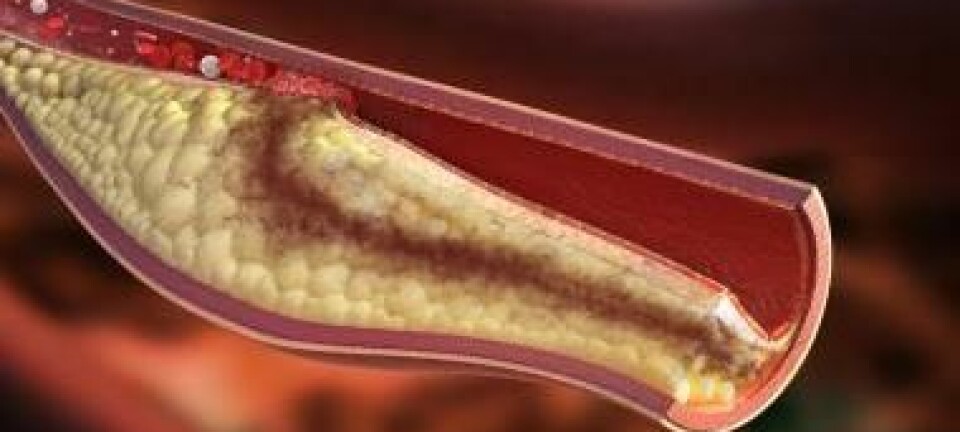
Erectile dysfunction? Physical activity could be the solution
Aerobic exercise can reactivate the penile tissue and, in many cases, improve the erectile function in men with lifestyle diseases, according to a new Danish study.
Many men struggle to achieve an erection. In fact, erectile dysfunction is the most common male sexual dysfunction.
In a research project at the University of Southern Denmark, we reviewed all international studies carried out over the last 10 years where physically inactive men with erectile dysfunction had received professional assistance to become physically active.
The results showed that, in many cases it is possible to attenuate or even solve erectile problems through physical activity. This is certainly good news for men who experience this frequent problem.
What is erectile dysfunction?
Erectile dysfunction is defined as the consistent or recurrent inability to get and/or maintain an erection sufficient for sexual activity.
In other words: persistent problems in getting it up (or keeping it up) during intercourse or masturbation.
Erectile dysfunction (including weakened night and morning erections) may be an early sign of lifestyle-related health problems and, in some cases, a symptom of early-stage atherosclerosis, which means stiffening and narrowing of the body’s arteries.
We know that erectile problems occur with increased frequency in men who smoke, are physically inactive, are overweight, have hypertension, cardiovascular diseases, or insulin resistance or manifest diabetes.
Consequently, erectile problems may be the first sign of disease, and therefore inexplicable and recurring erectile dysfunction should always be discussed with a doctor.
Read More: Scientists: Exercise can fight erectile dysfunction
How many men experience the problem?
Approximately 23 per cent of physically inactive men and about 23 to 40 per cent of men with obesity suffer from erectile dysfunction.
While 40 per cent of men receiving treatment for hypertension have erectile problems and the same is true for up to 75 per cent of men with fully developed cardiovascular disease.
By comparison, ’only ̔ 18 per cent of men in the general population have (or have had) erectile dysfunction. And this increases significantly with age.
Read More: Researchers are looking for young impotent men
Erectile dysfunction often occurs due to atherosclerosis
When a man becomes sexually aroused, blood flows to the penis. The increased blood circulation in the penile erectile tissue eventually results in an erection.
Three-quarters of erectile problems are estimated to occur in connection with atherosclerosis, which causes the penile artery walls to become thickened, hardened, and lose their elasticity. Atherosclerosis is typically triggered by lifestyle factors, including obesity, physical inactivity, and smoking.
If you experience erectile dysfunction without any likely explanation (such as relationship problems, stress, or life-crises), consult your GP and ask whether the problems may be caused by (early stages of) atherosclerosis.
Read More: Possible breakthrough in the treatment of atherosclerosis
Forty minutes of physical activity, four times a week is likely to improve erectile function
In our study, we conducted a systematic review of the research in the field over the last decade [https://www.ncbi.nlm.nih.gov/pubmed/29661646] to see just how much physical activity is needed to improve erectile function.
We saw that physical activity of moderate to high intensity for 40 minutes, 4 times a week, over a period of 6 months resulted in an improvement or even a normalisation of the test person’s erectile function.
Following six months of physical activity, men who had not been able to masturbate or have intercourse for a long time were able to resume sexual activity.
The figure below shows (on a scale of 0-30 points) the average erectile function of men in different studies before (blue) and after (red) the intervention (physical activity) from various studies.
In all studies, men achieved an improved erectile function. In the first study by Maio et al., physically active men achieved an average erectile function score of 27 points, which corresponds to a normal erectile function.
In short, the good news is that physical activity of moderate to high intensity can improve the cardiovascular function and, hence, reduce or even reverse erectile dysfunction.
Read More: Ibuprofen can damage men’s endocrine system
Take your time to get fit
If you are physically inactive and in bad shape, it’s important to not push yourself into a fitness regime that is beyond you. Otherwise, you risk injury, which could make exercising difficult and reduce your motivation significantly.
So, what kind of physical activity should you do?
Try aerobic exercise. For example, you can start by walking every day, swimming, or cycling, and increase the pace and distance week by week.
After a few weeks, you can continue, for example, with jogging, dancing, tennis, table tennis, football, handball, running, or you can join a gym.
In order to strengthen blood circulation (throughout the entire body and also the penis), exercise intensity must be moderate to high. This means that you warm up your body and produce sweat, your face turns red, your pulse increases, and you become slightly breathless, making it difficult to maintain a conversation.
If your erectile dysfunction is caused by early manifestations of atherosclerosis, 160 minutes of physical activity weekly for six months will most likely improve your ability to get an erection.
A physically active lifestyle should be considered as the beginning of more permanent lifestyle changes. If you are overweight, the effect of the physical activity can be further increased by weight loss. And if you smoke, the effect of physical activity becomes even stronger by quitting the tobacco.
Seek help with training
Changing your lifestyle from being physically inactive to being physically active is easier said than done, and so it is wise to seek professional help.
Physiotherapists have specific skills to evaluate your fitness level and potential. Furthermore, they are qualified to provide you with a personalised training program.
They can also assist you with guidance and support, and they can tell you what kind of exercise is appropriate for your individual situation and how to gradually increase your level of physical activity.
When making big lifestyle changes, it can be very helpful to work with a qualified professional who will support and encourage you to succeed.
And exercise is much more enjoyable when you do it with others. So, why not invite your partner or friends to join you?
After all, training is healthy, but it should also be fun.
---------------
This article is co-published with The Conversation, and in Danish at ForskerZonen, part of Videnskab.dk.
Scientific links
- Gerbild, Helle; Larsen, Camilla M.; Graugaard, Christian; Josefsson, Kristina.: 'Physical Activity to Improve Erectile Function: A Systematic Review of Intervention Studies', Sexual Medicine, 2018.
- Solvang, Elnegaard & Jarbøl: 'Urological symptoms among 23,240 men in the general danish population - concerns about symptoms, their persistence and influence on primary care contacts', Scandinavian Journal on Primary Health Care, 2018









